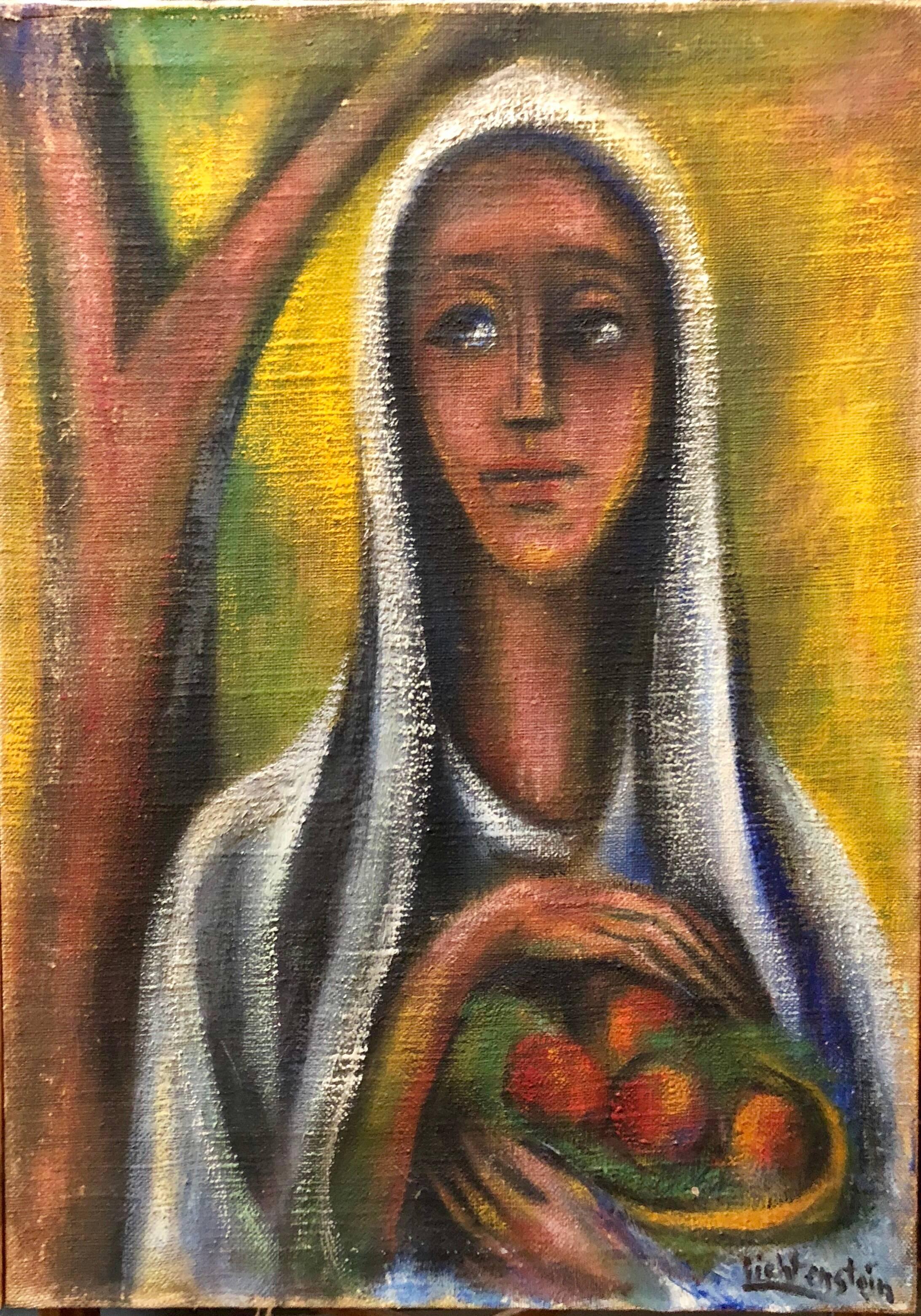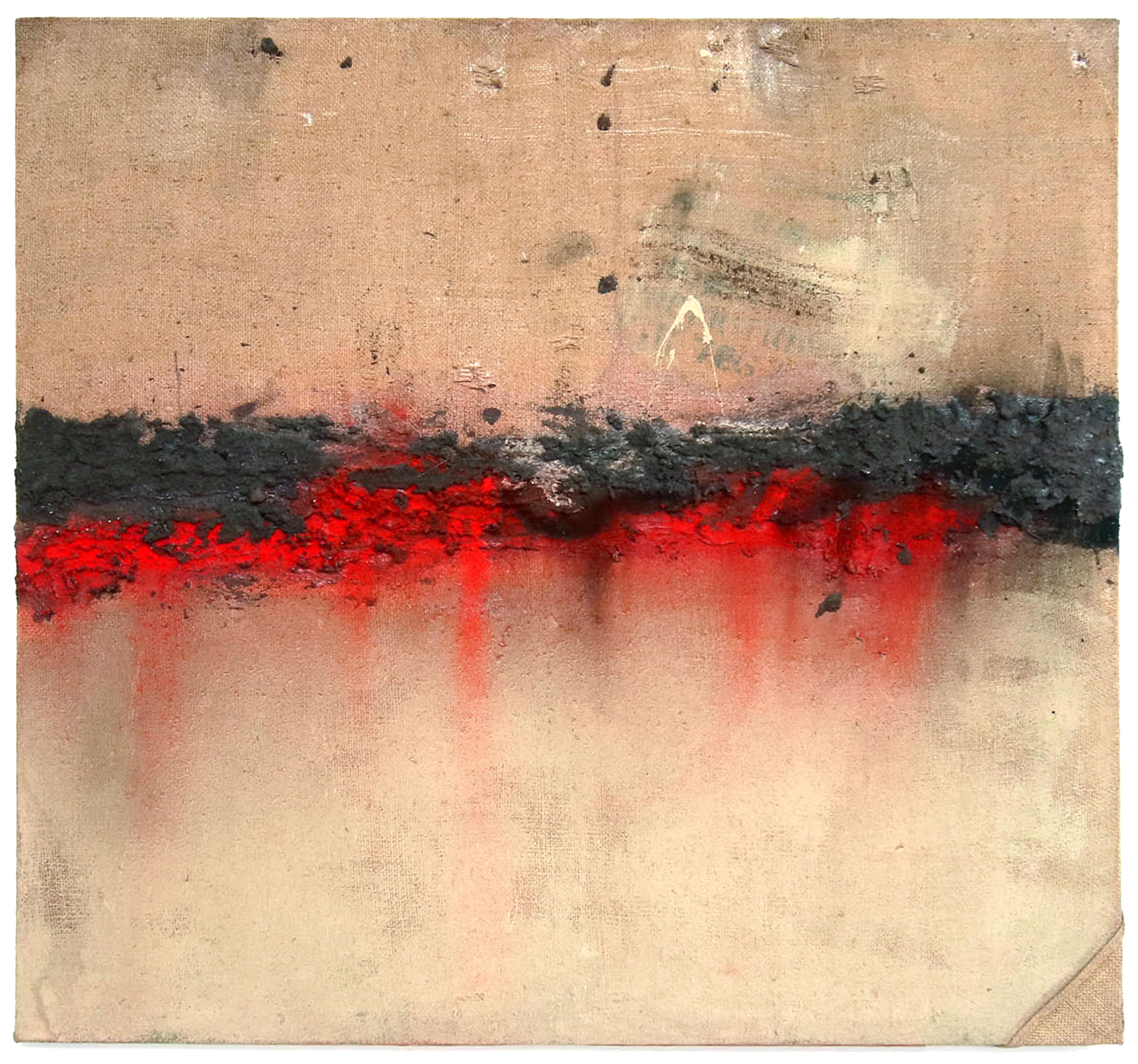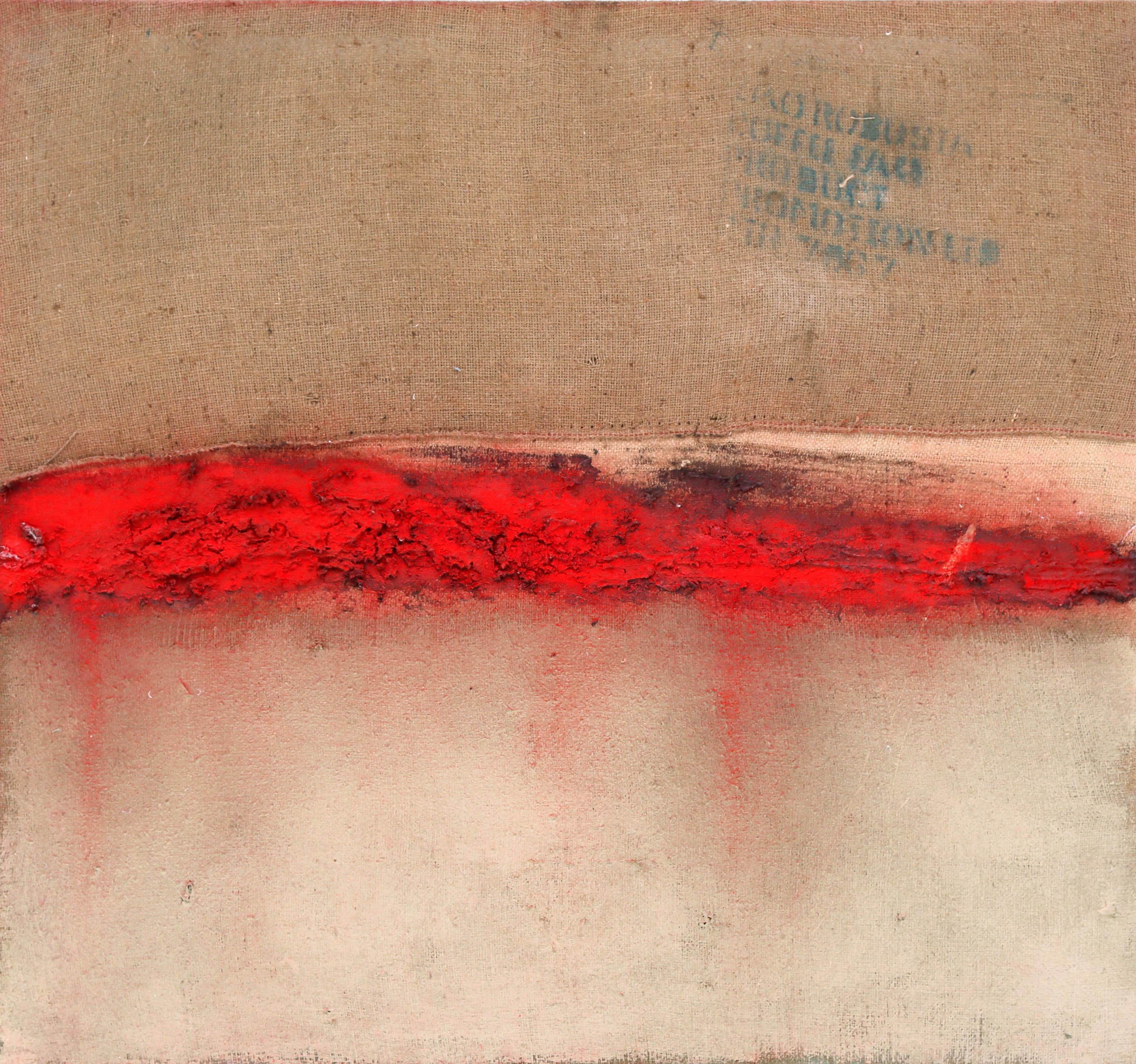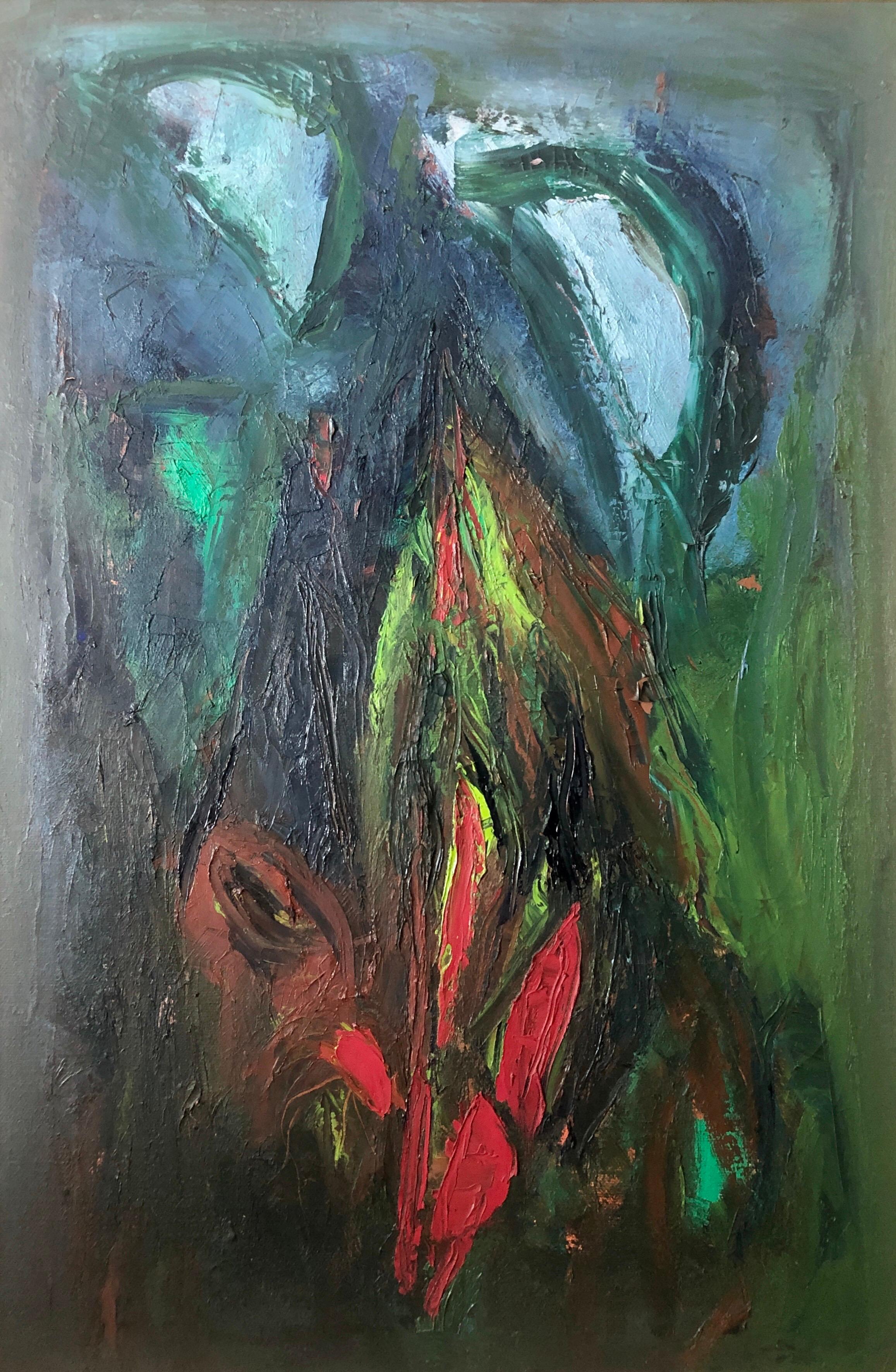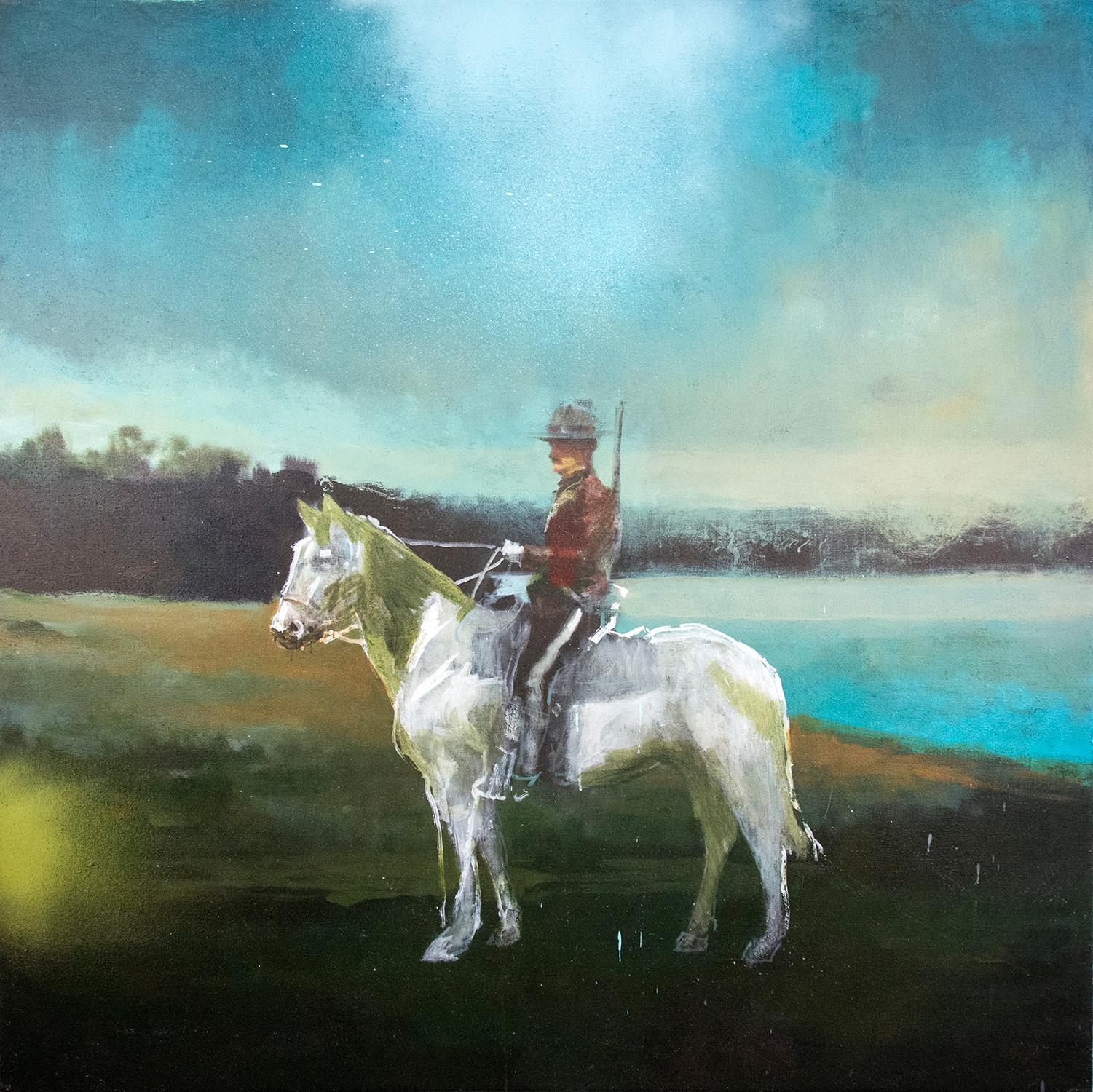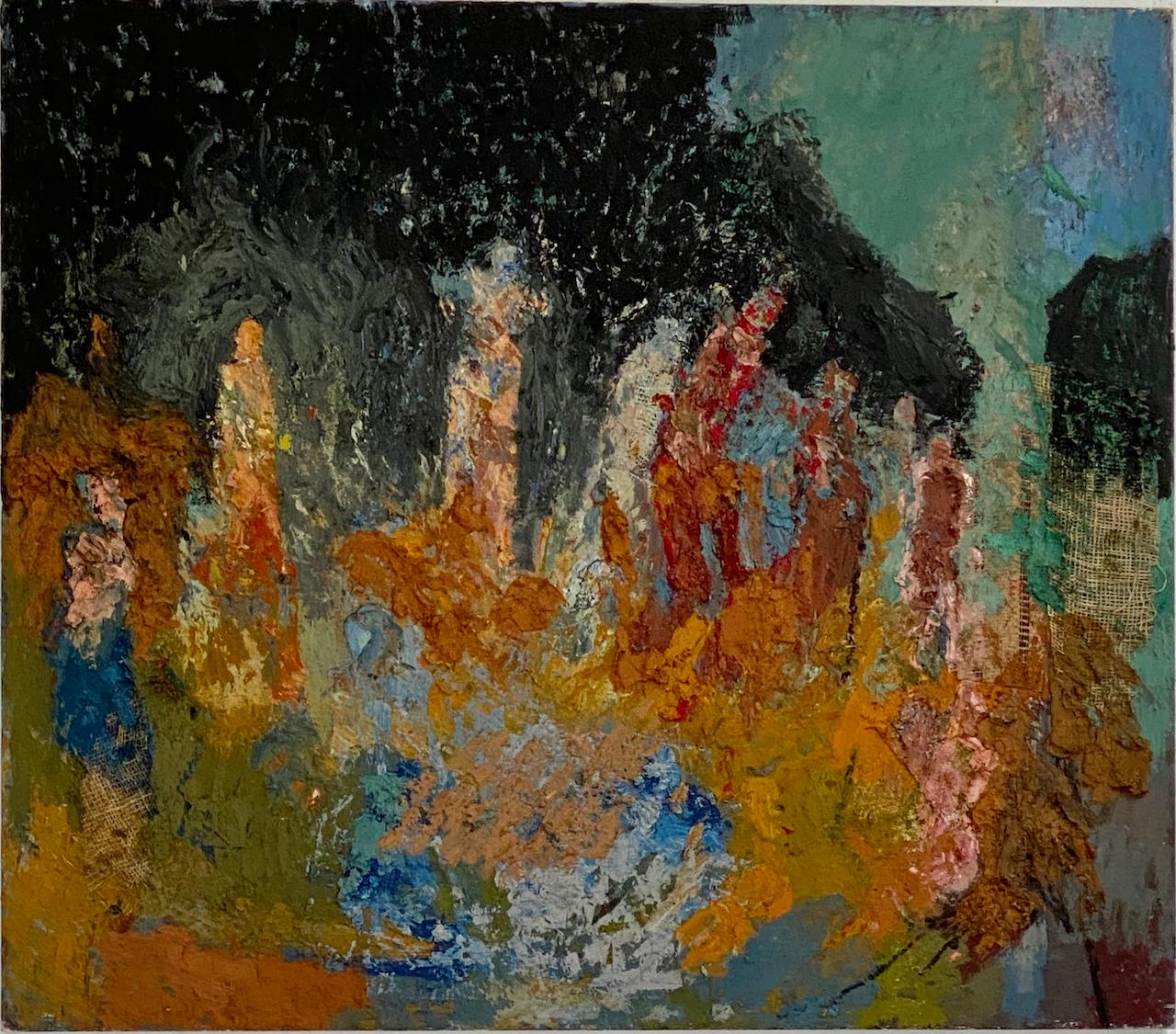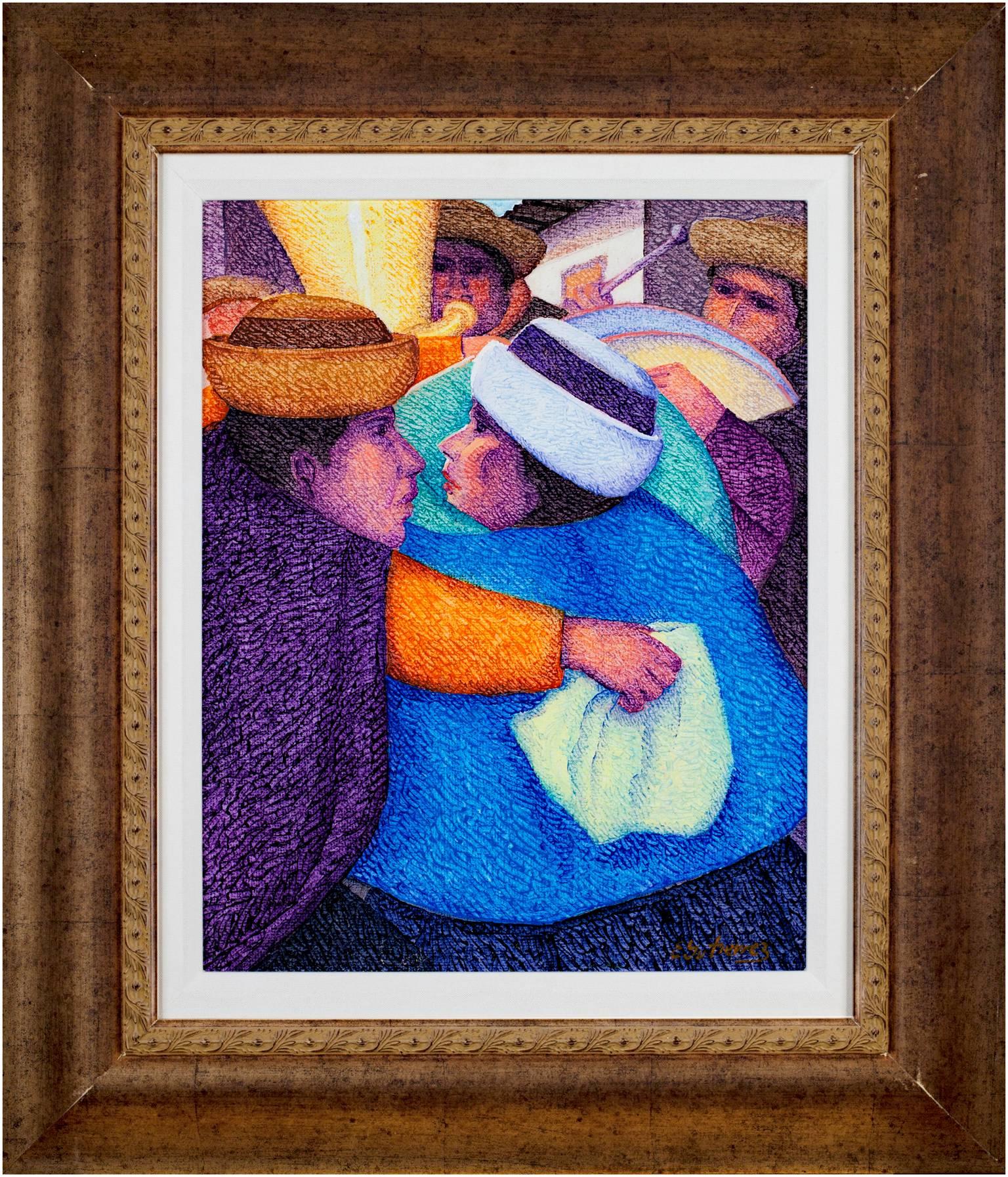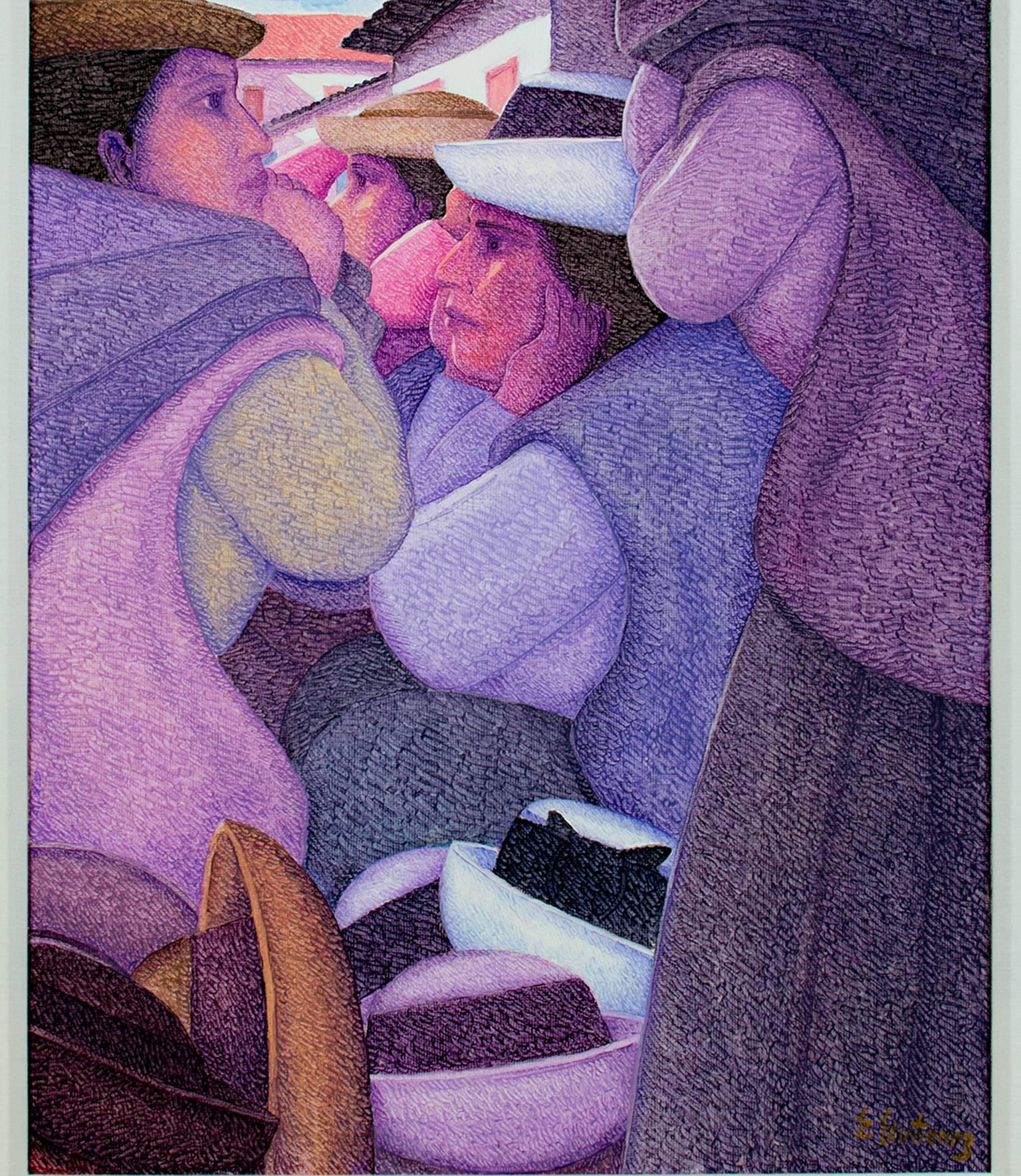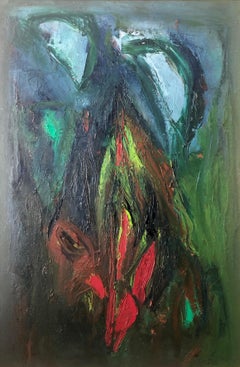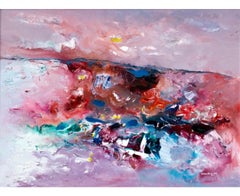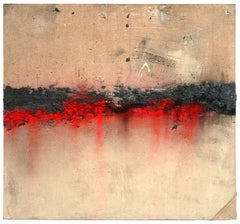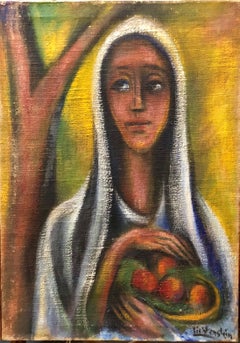
Rare Oil Painting Woman with Fruit Bezalel School Jerusalem Israeli Judaica
View Similar Items
Want more images or videos?
Request additional images or videos from the seller
1 of 7
Isaac Lichtenstein 1Rare Oil Painting Woman with Fruit Bezalel School Jerusalem Israeli Judaica
About the Item
- Creator:
- Dimensions:Height: 34 in (86.36 cm)Width: 24.5 in (62.23 cm)
- Medium:
- Movement & Style:
- Period:
- Condition:needs new frame.
- Gallery Location:Surfside, FL
- Reference Number:1stDibs: LU3822530711
About the Seller
4.9
Platinum Seller
These expertly vetted sellers are 1stDibs' most experienced sellers and are rated highest by our customers.
Established in 1995
1stDibs seller since 2014
1,549 sales on 1stDibs
Typical response time: 1 hour
More From This SellerView All
- Rare Oil Painting Woman with Fruit Bezalel School Jerusalem Israeli JudaicaBy Isaac Lichtenstein 1Located in Surfside, FLYITSKHOK LIKHTENSHTEYN (ISAAC LICHTENSTEIN) (1888-1981) (Icchok, Izrael) was born in Lodz, Poland. Initially he was studying at Yehuda Pen school in Witebsk. In the same school ...Category
Early 20th Century Post-Impressionist Figurative Paintings
MaterialsJute, Oil
- Large Colorful MCM Abstract Expressionist Oil Painting Modernist Ralph RosenborgBy Ralph RosenborgLocated in Surfside, FLRalph Rosenborg (American, 1913-1992) Mountain Weed with Two Clouds, oil on jute canvas, canvas is hand signed recto and verso, artists label and Snyder Fine Art gallery label, The painting is dated 1965. Dimensions: 24 x 36 canvas, framed size is 44.5 x 32.5. Ralph Rosenborg (1913–1992) was an American artist whose paintings were described as both expressionist and abstract and who was a colleague of the New York Abstract Expressionists in the 1940s and 1950s. Unlike them, however, he preferred to make small works and tended to explicitly draw upon natural forms and figures for his abstract subjects. Called a "highly personal artist," he developed a unique style that was considered to be both mystical and magic. His career was exceptionally long, covering more than 50 years. Rosenborg was born in Brooklyn, New York, on June 9, 1913. In 1929, while he was a high school student, he began to work with the designer, artist, and instructor, Henriette Reiss. When Rosenborg encountered her, Reiss was serving as an instructor for the School Art League in the American Museum of Natural History. She was then engaged in instructing both students and their teachers in the city school system by a method she called Rhythmic Design. She believed inspiration for abstract designs could be found in rhythms—rhythms that could be perceived in ordinary perceptions much as they are when listening to music. In May 1930 Reiss selected a drawing by Rosenborg to be shown in an exhibition of creative design by City high school students. From 1930 to 1933, aged 17 to 20, Rosenborg studied with Reiss in what Vivien Raynor of the New York Times called a "pupil-apprentice" relationship. During this time she instructed him in music appreciation, literature, and art history as well as giving technical training in art. In April 1934 Rosenborg was one of 1,500 artists to participate in the annual Salons of America exhibition, which was held that year in Rockefeller Center RCA Building. Each paid two dollars for the privilege of hanging up to three works and none was given prominence over the others. The New York Times reported that by the time the show closed a month later, some 30,000 people had viewed it. The following year he was given a solo exhibition (his first) at the Lounge Gallery of the Eighth Street Playhouse. The year after that he participated in a group show held by the Municipal Art Committee and in 1937 was given a second solo exhibition, this time in the Artists Gallery. That year he also became a founding member of and participated in a group show held by American Abstract Artists, a loose assembly of artists that aimed to promote abstract art and artists in New York. Its founders included Josef Albers, Ilya Bolotowsky, Werner Drewes, Ibram Lassaw, Mercedes Matter, Louis Schanker, Vaclav Vytlacil and Rudolph Weisenborn. At roughly the same time Rosenborg associated himself with a group of abstractionists that called itself "The Ten" (It included Ben-Zion, Mark Rothko, Adolph Gottlieb and Joe Solman) and in May 1938 joined with its other members in what would be his first appearance in a commercial gallery: the Gallery Georgette Passedoit. In 1938 he his work appeared in a group show at the Lounge Gallery, in 1939 in group shows at the Artists Gallery and at the Bonestell Gallery with David Burliuk, Earl Kerkam, Karl Knaths and Jean Liberte...Category
1960s Abstract Expressionist Abstract Paintings
MaterialsJute, Oil, Canvas
- Large Colorful Abstract Expressionist Oil Painting Modernist Beach LandscapeBy Ralph RosenborgLocated in Surfside, FLRalph Rosenborg (American, 1913-1992) "American Landscape, Sky and Shore, 1973" Oil on canvas. Signed 'Rosenborg' (lower right). Titled (verso). 30 x 40 in Ralph Rosenborg (1913–1992) was an American artist whose paintings were described as both expressionist and abstract and who was a colleague of the New York Abstract Expressionists in the 1940s and 1950s. Unlike them, however, he preferred to make small works and tended to explicitly draw upon natural forms and figures for his abstract subjects. Called a "highly personal artist," he developed a unique style that was considered to be both mystical and magic. His career was exceptionally long, covering more than 50 years. Rosenborg was born in Brooklyn, New York, on June 9, 1913. In 1929, while he was a high school student, he began to work with the designer, artist, and instructor, Henriette Reiss. When Rosenborg encountered her, Reiss was serving as an instructor for the School Art League in the American Museum of Natural History. She was then engaged in instructing both students and their teachers in the city school system by a method she called Rhythmic Design. She believed inspiration for abstract designs could be found in rhythms—rhythms that could be perceived in ordinary perceptions much as they are when listening to music. In May 1930 Reiss selected a drawing by Rosenborg to be shown in an exhibition of creative design by City high school students. From 1930 to 1933, aged 17 to 20, Rosenborg studied with Reiss in what Vivien Raynor of the New York Times called a "pupil-apprentice" relationship. During this time she instructed him in music appreciation, literature, and art history as well as giving technical training in art. In April 1934 Rosenborg was one of 1,500 artists to participate in the annual Salons of America exhibition, which was held that year in Rockefeller Center RCA Building. Each paid two dollars for the privilege of hanging up to three works and none was given prominence over the others. The New York Times reported that by the time the show closed a month later, some 30,000 people had viewed it. The following year he was given a solo exhibition (his first) at the Lounge Gallery of the Eighth Street Playhouse. The year after that he participated in a group show held by the Municipal Art Committee and in 1937 was given a second solo exhibition, this time in the Artists Gallery. That year he also became a founding member of and participated in a group show held by American Abstract Artists, a loose assembly of artists that aimed to promote abstract art and artists in New York. Its founders included Josef Albers, Ilya Bolotowsky, Werner Drewes, Ibram Lassaw, Mercedes Matter, Louis Schanker, Vaclav Vytlacil and Rudolph Weisenborn. At roughly the same time Rosenborg associated himself with a group of abstractionists that called itself "The Ten" (It included Ben-Zion, Mark Rothko, Adolph Gottlieb and Joe Solman) and in May 1938 joined with its other members in what would be his first appearance in a commercial gallery: the Gallery Georgette Passedoit. In 1938 he his work appeared in a group show at the Lounge Gallery, in 1939 in group shows at the Artists Gallery and at the Bonestell Gallery with David Burliuk, Earl Kerkam, Karl Knaths and Jean Liberte...Category
1960s Abstract Expressionist Abstract Paintings
MaterialsCanvas, Oil, Jute
- Israeli KIbbutz Artist Toddler, Swim Tube Pointilist Oil Painting Bezalel SchoolBy Arie KaplunLocated in Surfside, FLBelarusian born Israeli artist. lived in germany studied at the Bezalel School. Bezalel Academy of Arts and Design is Israel's national school of art. Established in 1906 by Jewish...Category
20th Century Pointillist Figurative Paintings
MaterialsCanvas, Oil
- Judaica Oil Painting 1945 Palestine Old Jewish Man Polish Israeli ArtistBy Ozer ShabatLocated in Surfside, FLOzer Shabat 1978-1901 Ozer Shabbat was an Israeli painter, a resident of Haifa. Belonged to the Palestine Expressionist group of the late 1920s and early 1930s. Shabbat was born in Wolbrom, Poland. At the end of the First World War he went to Holland for agricultural training in the framework of the HeChalutz movement, prior to his immigration to Palestine. In 1920 he immigrated to Eretz Israel and joined the Hulda group. Later he joined the Merhavia group and there he began painting. Because of his desire to study drawing, he left the group and moved to Jerusalem. In 1921, he wrote articles in the newspaper "HaSadeh" on the subject of agriculture and Dutch cheese. Ozer Shabath won the first prize in a competition for the design of the Dutch Consulate's Garden in Jerusalem, enabling him to travel to Paris in 1923 to study painting. Until 1925 he studied painting at the Grande Chaumiere Academy in Paris. This year he returned to Eretz Israel and settled in Haifa, where he lived until his death. In 1928 he participated for the first time in an exhibition of Eretz Israel artists at the Tower of David. Since then he has participated in all the general exhibitions of Israeli artists. In 1934, together with painters Menachem Shemi, Avraham Mohar, Zvi Meirovitch and others, he founded the Haifa Artists' Group. In 1935-36 he toured Europe and visited Italy, France and England. During his visit, he maintained contacts with artists from the Jewish school of Paris. He has exhibited in several solo exhibitions, represented Israel in exhibitions in Europe and participated in international exhibitions in New York, Johannesburg and Zurich. In 1958 he represented Israel in the Venice Biennale. In 1960, Shabat, together with Elchanan Halpern he represented the Israeli Painters Association at the International Congress of Plastic Arts held in Vienna, Austria . In the 40s and 50s he focused on landscape pictures. However, despite the focus on the Israeli landscape, the approach is universal in the framework of the post-Impressionist painting school. In the 1960s, his approach changed and he turned more to abstraction. The abstract direction gradually evolved. The point of departure of the abstract approach is the architectural landscape, but this view loses its real character and becomes only imaginary: the buildings lose their real character and turn into exclusive geometric areas that are usually set against a dark background. Over time, architecture captured the lion's share of his paintings. Cities like Safed, Jaffa and Jerusalem are the subject of many pictures. He taught painting and art at the schools of the kibbutzim in Ramat Yochanan and Kfar Yehoshua, in high schools in Haifa and in the IDF and Gordon seminars. His paintings were purchased and are in the permanent collection of the Bezalel National Museum (now the Israel Museum), Haifa Museum of Art, Haifa Maritime Museum, Acre Municipal Museum. Select Solo exhibitions 1936 - Nadler Gallery, Haifa. 1943 - The Tel Aviv Museum of Art. 1952 - Artists House, Haifa. 1953 - Bezalel House, Jerusalem. 1955 - Gallery in Geneva, Switzerland. 1955 - The Writers' Club, Haifa. 1959 - Artists House, Haifa. 1960 - Museum of Modern Art, Haifa. 1962 - Museum of Modern Art, Haifa. 1963 - Gallery 220, Tel Aviv. 1968 - The Municipal Museum of Beit Emanuel, Ramat Gan. 1979 - Memorial exhibition marking the first anniversary...Category
1940s Post-Impressionist Figurative Paintings
MaterialsCanvas, Oil
- Rare Ecole De Paris Judaica Rabbin avec Torah (Rabbi with Torah) OIl PaintingBy Simon Claude (Vanier) AbramovitchLocated in Surfside, FLwithout frame it is 31.5 X 15.75 inches. It is quite rare to find good Judaic Paintings by School of Paris listed artists. This is a particularly good piece of French Jewish art.Category
Early 20th Century Post-Impressionist Figurative Paintings
MaterialsCanvas, Oil
You May Also Like
- Barcelona urbanscape Rambla de les Flors oil on burlap paintingLocated in Barcelona, BarcelonaJoan Joseph Garí (1922) - Rambla de las flores Barcelona - Oil on burlap Oil measures 33x41 cm. Frameless. Painter born in Granollers in 1922. Trained in his hometown and at the Sch...Category
1970s Post-Impressionist Landscape Paintings
MaterialsOil, Burlap
$659 Sale Price33% Off - Boulevard of flowers Barcelona Spain oil on burlap painting spanish urbanscapeBy Jordi CurosLocated in Barcelona, BarcelonaJordi Curós Ventura (1930-2007) - Barcelona - Oil on burlap Oil measures 73x60 cm. Frameless.. Jordi Curós Ventura (Olot, Girona, March 4, 1930) is a Cata...Category
1990s Post-Impressionist Landscape Paintings
MaterialsOil, Burlap
- THE WAY 2 - Mixed Media Painting On Jute Canvas, Abstract Artwork, Large FormatBy Marta PokojowczykLocated in Salzburg, AT„The Way 2”, mixed media (soil, pearl glue, oil, powder pigment, rosin) on jute, 140 x 150, 2012 Series “The Way” by Marta Pokojowczyk contains mixed media paintings on jute created...Category
2010s Contemporary Figurative Paintings
MaterialsJute, Glue, Mixed Media, Oil, Pigment
- THE WAY 4 - Mixed Media Painting On Jute Canvas, Abstract Artwork, Large FormatBy Marta PokojowczykLocated in Salzburg, AT„The Way #4”, mixed media (soil, pearl glue, oil, powder pigment, rosin) on jute, 140 x 170, 2012 Series “The Way” by Marta Pokojowczyk contains mixed media paintings on jute create...Category
2010s Contemporary Figurative Paintings
MaterialsJute, Glue, Mixed Media, Oil, Pigment
- THE WAY 6 - Mixed Media Painting On Jute Canvas, Abstract Artwork, Large FormatBy Marta PokojowczykLocated in Salzburg, AT„The Way #6”, mixed media (soil, pearl glue, oil, powder pigment, rosin) on jute, 140 x 150, 2012 Series “The Way” by Marta Pokojowczyk contains mixed media paintings on jute create...Category
2010s Contemporary Figurative Paintings
MaterialsJute, Glue, Mixed Media, Oil, Pigment
- Mountie III- large, green, blue, Canadian, figurative, mixed media on juteBy Peter HofferLocated in Bloomfield, ONThe iconic presence of a Mountie in red serge on a white horse is set against a backdrop of a cerulean lake and atmospheric sky. Peter Hoffer's paintings evoke nostalgia for classica...Category
2010s Contemporary Figurative Paintings
MaterialsOil, Jute, Acrylic, Pigment
Recently Viewed
View AllMore Ways To Browse
Lecomte Du Nouy
Louis Braquet
Marguerite Louppe
Marian D Harris
Mark Clark On Sale
Matthew Weatherly
Maurice EMPI On Sale
Mirror Palais Dress
Phyllis Washington Antiques Ca
R Koller
Rachel Katz
Ramen Bowl
Rochester Oil Lamp
Sapho Gallery
Suzanne Etienne
Syracuse Football
The Continence Of Scipio
Tiffany Acrylic Ring
